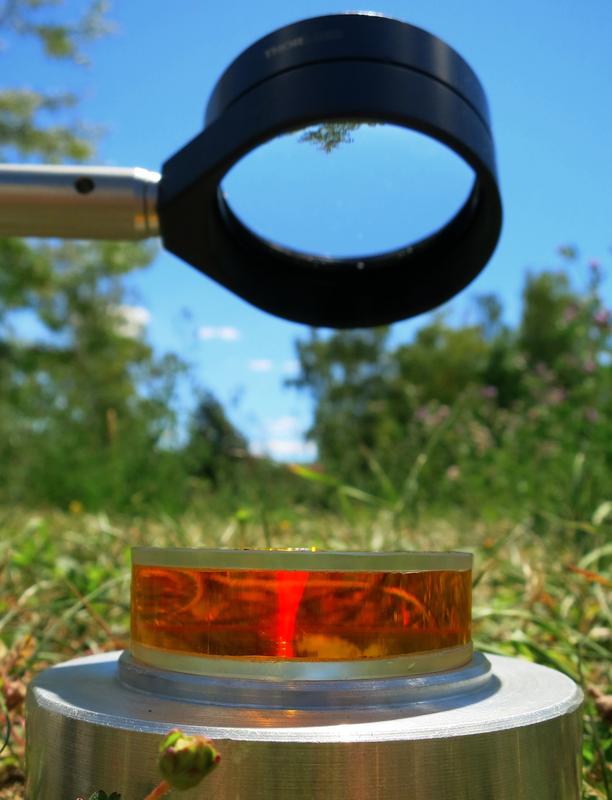New process discovered: Mere sunlight can be used to eradicate pollutants in water

The new process makes use of mere sunlight to destroy water pollutants. Robert Naumann / Uni Halle
The chemists at MLU rely on electrons moving freely in water, so-called hydrated electrons, to degrade dissolved pollutants.
“These electrons are extremely reactive and can be used for a plethora of reactions. They break down even the most recalcitrant pollutants,” explains MLU-chemist Professor Martin Goez.
For this to work, however, the electrons have to be released from the molecular compounds in which they are usually tightly bound. Until now, generating those electrons has required complex and expensive high-power lasers.
Goez’s research group has been working for years on finding an alternative to this. A few months ago they introduced a new approach which only required a green light-emitting diode as the sole energy source. Vitamin C and traces of a metal complex as the catalyst were used to bring about the desired reaction.
However, the catalyst had to be enclosed in tiny containers known as micelles. This reduced the reaction’s efficiency, and the micelle molecules themselves were only partially biodegradable.
The group therefore looked for a way to avoid these additives. Ultimately, they found the answer in a highly charged anionic catalyst based on a ruthenium-metal complex.
By combining this with urate (a salt of uric acid), the researchers were able to effect the desired reaction in water without the need of micelles by exploiting the Coulombic repulsions.
Further investigations have revealed that the new process is not only a very efficient way to produce hydrated electrons but also has a wide range of applications.
“Our new approach is so simple that it doesn't even need to take place in a lab,” says Goez. His group conducted a field trial in a meadow and tested their new approach in water contaminated with chloroacetic acid. The result: the pollutants were eliminated in a small sample of water even when there was only a moderate amount of sunshine. Follow-up studies will examine whether the method developed by the chemists in Halle can also be used for large-scale removal of pollutants.
Naumann R., Goez M., First Micelle-Free Photoredox Catalytic Access to Hydrated Electrons for Syntheses and Remediations with a Visible LED or even Sunlight, Chem. Eur. J., doi: 10.1002/chem.201803929
Media Contact
More Information:
http://www.uni-halle.deAll latest news from the category: Life Sciences and Chemistry
Articles and reports from the Life Sciences and chemistry area deal with applied and basic research into modern biology, chemistry and human medicine.
Valuable information can be found on a range of life sciences fields including bacteriology, biochemistry, bionics, bioinformatics, biophysics, biotechnology, genetics, geobotany, human biology, marine biology, microbiology, molecular biology, cellular biology, zoology, bioinorganic chemistry, microchemistry and environmental chemistry.
Newest articles

High-energy-density aqueous battery based on halogen multi-electron transfer
Traditional non-aqueous lithium-ion batteries have a high energy density, but their safety is compromised due to the flammable organic electrolytes they utilize. Aqueous batteries use water as the solvent for…

First-ever combined heart pump and pig kidney transplant
…gives new hope to patient with terminal illness. Surgeons at NYU Langone Health performed the first-ever combined mechanical heart pump and gene-edited pig kidney transplant surgery in a 54-year-old woman…

Biophysics: Testing how well biomarkers work
LMU researchers have developed a method to determine how reliably target proteins can be labeled using super-resolution fluorescence microscopy. Modern microscopy techniques make it possible to examine the inner workings…





















